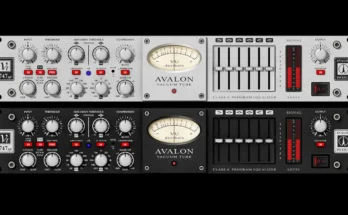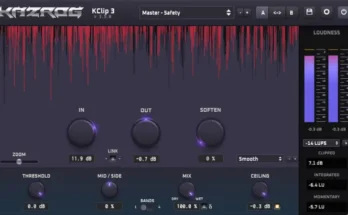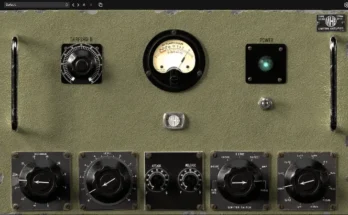x64 x86, vst, 5mb
GranuLab is a granular resampler with some fun control options. All changes are gradual over time, so it’s suitable both for long drones and for trashing a drum loop.
By rasmus ekman.
Basic use:
Drop a soundfile (WAV/AIFF) into the empty box to get sound going.
(or right-click / apple-click to open file dialog).
Drop granny.json file on the patch drop button first time you open Granny in a DAW.
Every setting/param you change is applied over time: 0-600 seconds (10 minutes).
Change time is set by the “time” knob in the Patches box, lower left.
Shift key to fine-tune values and controllers.
Control-click to set default value of param knob.
Keyboard digits 0-9 sets exact value (nearest 0.1, 1 or 10 dep on range).
(BUG: Not correct for grain freq since this is an offset from 1:1. Will do something…).
Right-click for options menu (on patch slots and controller boxes).
MIDI:
MIDI note changes Grain Frequency. Note C4 (=60) means zero offset.
Granny is monophonic, plays the last note. and switches to previous note when released.
If you send a MIDI note, Granny switches to only use MIDI note input.
The dark blue ADSR is used (the light blue below is for controls).
If you want continuous sound after that, raise the start/end value of the ADSR and hit a note briefly.
How it works
Sound is created by playing back many small sound clips, “grains”. Each grain is a mini-sampler with fixed settings that plays a part of the sound once and then disappears.
The Soundfile is shown with amplitude (red) and “noisiness” (yellow) curves overlay.
These values can be used in a controller to influence any parameter.
Select a part of the sound by mouse in the sound box. Shift-click to drag the selection.
Grain parameters:
Sound playback rate. Below soundfile box. Default is 1:1 normal play. Control-click to reset default.
Play position cannot be set directly (right now), but there are 2 controllers for jumping around in the soundfile.
TIP: You can click waveform selection to cause a position change, then set back to full. Not a good solution. Will fix this, but animation of the play position seems harder than expected.
Grains box:
Grain rate and grain length. Grains can be 1 ms up to 10 seconds.
New grains start at a rate of 1/60 secs up to 2000 per second.
Grain frequency. Semitones offset from original sound. Use Shift key to fine-tune. Keys 0-9 jump to exact values, but off by 1. (TODO…)
MIDI notes offset frequency. MIDI C4 (key 60) is zero offset.
Grain glissando. Each grain can rise/drop in pitch. This gives that classic grainy sound (which may be a little tiring, or just your thing).
Small gliss offsets make time-stretched sounds less metallic,
TIP: Set gliss to zero and use a random control with small amount.
Grain attack/decay. Left controller for attack, right for decay (but I usually don’t find much use for controllers here).
TIP: If you use large grain gliss, changing attack and decay affects the sound more.
Density: The number of grains playing together, i.e. grain length × grain rate.
High density leads to very high amplitude (clipping), and may overload the CPU. This leads to chopping sound and general misery, so you gotta watch the density.
Granny does internal density compensation for amplitude and delay line. This seems to work ok, but may depend on the soundfile. Display and controls for this will be added.
TIP: Use Internal param grain density (“g.dns”) as a controller.
Currently max 1000 grains at the same time, usually not recommended. Better to have shorter grains when grain rate is high.
[toggle title=”Home page”]https://goo.gl/TYdgko[/toggle]

http://alfalink.to/c3a7eb7c994a64759949
Please REPORT in Comment Broken Links




